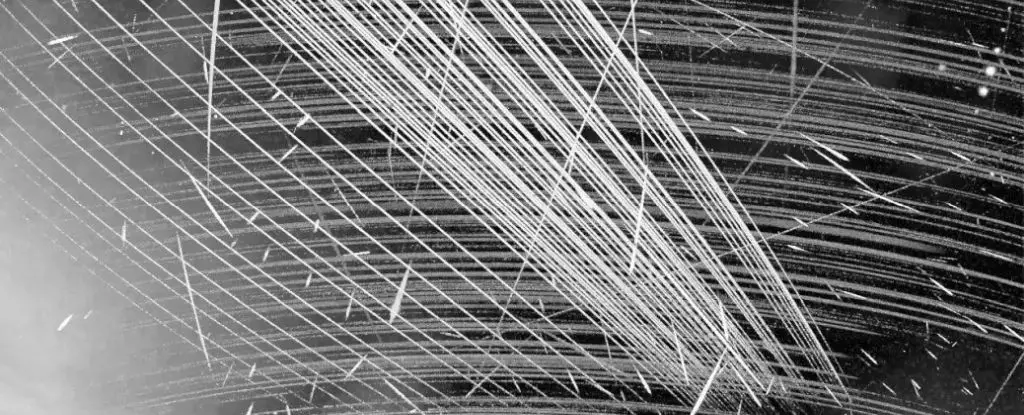As the number of satellites orbiting our planet increases at an unprecedented rate, concerns about the effects of this proliferation on both space observation and the natural environment are becoming critical. Satellites, especially those that belong to large communication constellations such as SpaceX’s Starlink, are impacting radio wavelengths traditionally reserved for scientific purposes. The recent introduction of the second-generation Starlink satellites (v2mini and v2mini Direct-to-Cell) has significantly exacerbated this situation, as they emit radiation levels up to 32 times greater than their predecessors. This concerning trend leads to a potent discussion about the ramifications for radio astronomy and the future of our night sky.
Astronomers have been vocal about the consequences of satellite-generated radiation interfering with the radio spectrum. Cees Bassa, an astronomer at the Netherlands Institute for Radio Astronomy (ASTRON), expressed particular alarm, revealing that the unwanted radiation from Starlink satellites is now 10 million times brighter than the faintest astrophysical sources detectable by instruments like the LOFAR. For perspective, this brightness can be likened to the stark contrast between faint stars seen with the naked eye and the illuminating brilliance of a full moon. With SpaceX continuing to launch approximately 40 satellites weekly, the problem is compounding, raising questions about the long-term viability of radio astronomy as a discipline.
The implications of this radiation leak extend beyond visible light pollution, which has already distorted astronomical observations with streaks across the night sky. Researchers are discovering that satellite constellations are emitting radio waves beyond their communication bands, particularly in the 150.05 to 153 megahertz range, which is crucial for radio astronomy. Studies using the LOFAR system have detected concerning emissions from multiple Starlink satellites, revealing a worrying trend toward greater environmental intrusion from these orbiting structures. As more companies enter the satellite arena—such as Amazon with its plans for thousands of satellites and China’s looming Spacesail Constellation—which aims for a staggering 15,000—it becomes increasingly clear that these issues require urgent attention.
Currently, the regulatory framework governing the emissions from satellites is notably lacking. There are no established guidelines that specifically address the unintended electromagnetic radiation produced by satellite constellations. This void in regulation is alarming, especially when considering that even minor leaks from individual satellites could collectively result in substantial disturbances as low-Earth orbit becomes cluttered with thousands of new satellites. Given this emerging crisis, researchers are advocating for robust regulations to mitigate these effects before they spiral out of control.
The consensus expresses that it is crucial for companies like SpaceX to employ rigorous data analysis in identifying the sources of the unintended radiation emitted and to implement effective solutions. Without proactive measures, the risk of permanently impairing crucial astronomical observations becomes an alarming reality.
The implications of diminished radio observation are not merely confined to academic research; they extend to vital technological innovations that stem from studying the cosmos. Technologies we rely on daily—including Wi-Fi, GPS, and even aspects of advanced medical imaging—have roots in advancements driven by radio astronomy. The potential detriment to this field, therefore, poses risks that could reverberate through various sectors, leading to unforeseen challenges in technology and science.
Federico Di Vruno from the SKA Observatory succinctly highlights the urgency of the situation, stating that humanity has reached an inflection point. There is a pressing need to act decisively to preserve our access to the universe. As corporate players in the satellite industry, including SpaceX, OneWeb, and Amazon, vie for dominance in space, they have an opportunity to pioneer sustainable practices that not only protect their business interests but also the integrity of astronomical research.
As satellite swarms proliferate in low-Earth orbit, significant challenges emerge regarding radiation leakage and its interference with radio astronomy. With no regulatory safeguards currently in place, scientists and researchers must collaborate with industry leaders to develop solutions that mitigate the impact of these emissions. Preserving our capabilities for celestial observation is not just essential for scientific inquiry but also for the technological progress that arises from such explorations. The collaborative effort between regulators and satellite companies may well dictate the future of both radio astronomy and our shared sky.


Leave a Reply